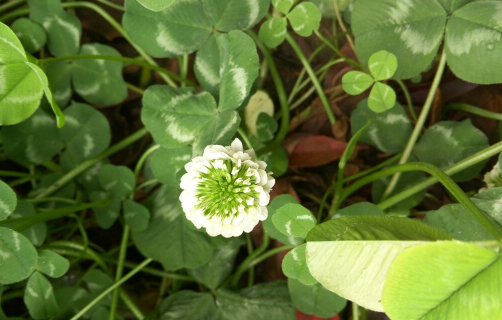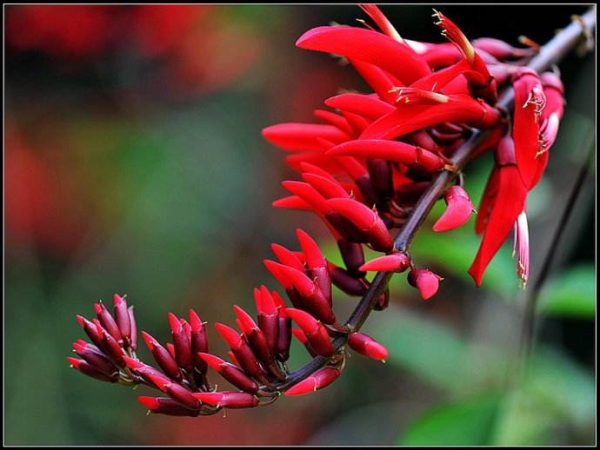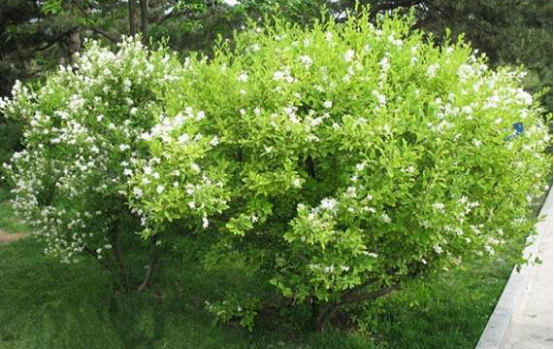Matters needing attention in the culture of clover
Diseases and insect pests
The diseases and insect pests of clover will be more common. Sclerotinia sclerotiorum and virus infection are the main diseases of clover. If the clover suffers from the disease, we must pull out the diseased plants and cut off the source of the disease. Second, chemicals can be used. The more common pests are leafhoppers, ground tigers, white butterflies and so on, which require us to use special pesticides or pesticides to kill them.

Culture methods and matters needing attention of clover
Cultivation methods of clover soil
The seeds of clover are relatively small, so the soil yield is weak, and the seedlings are slender, so they grow slowly in the seedling stage. Therefore, before sowing, we must straighten up the soil, turn the soil shallowly and remove sundries, so that the soil becomes fine and broken, and then the soil becomes loose and convenient for sowing.
Sowing and seed treatment
The best sowing time of clover is in spring and autumn, and the suitable sowing temperature should be 19-24 ℃. It can be sowed when the temperature is above 15 degrees Celsius in spring and in mid-late September in autumn. Sowing seeds before sowing, sowing depth of 1-2cm, if too deep may lead to difficult emergence.
Post-planting management
Before emergence of clover after sowing, if the soil is hardened, timely loosening should be done to facilitate seedling emergence. Due to the slow growth of clover at seedling stage, it is extremely vulnerable to weeds, so the seedling stage should loosen the soil and weed twice; in addition, it is necessary to do a good job in the prevention and control of diseases and insect pests of clover to ensure the smooth growth of clover. When the soil is dry, it is necessary to do a good job of keeping water, and keeping the soil moist is more conducive to the growth of clover.
Fertilizer application
Clover belongs to legumes, so it has the ability of nitrogen fixation, but in its seedling stage, it still needs to add a small amount of nitrogen fertilizer to strengthen the seedlings, otherwise the plants will be short and the leaves will turn yellow. After the seedlings thrive, they can also apply a certain amount of phosphorus and potassium fertilizer.
Matters needing attention in the culture of clover diseases and insect pests
The diseases and insect pests of clover will be more common. Sclerotinia sclerotiorum and virus infection are the main diseases of clover. If the clover suffers from the disease, we can pull out the diseased plant and cut off the source of the disease. Second, we can use chemicals. The more common pests are leafhoppers, ground tigers, white butterflies and so on, which require us to use special pesticides or pesticides to kill them.
Culture methods of white clover
The pot soil should be loose and fertile sandy loam, and the pot should be changed before moving out in early spring and April every year. White clover should do three things when changing the basin: the first is to replace the new culture soil; the second is to cut off part of the overdense curly fibrous roots; the third is to apply sufficient base fertilizer and slightly add phosphate fertilizer to the bottom of the basin. In order to keep the tree shape graceful and with a large amount of flowers, according to the strong sprouting ability of white clover branches, pruning and shaping can be carried out before and after leaving the room in early spring, except for 2-3 buds at the base, all the upper branches are cut, and pruning can promote the development of new branches. the growth will be more exuberant, and the plant shape will also be beautiful. After pruning, due to the reduction of aboveground consumption, it is necessary to properly control water and fertilizer.
The positive tree species of white clover should be moved outside in early May and placed in a sunny place. It is also the growing season of white clover. It is necessary to strengthen the management of fertilizer and water, loosening soil, pulling grass and so on. Apply dilute liquid fertilizer every 7-10 days, watering should depend on the dry and wet condition of the basin soil, too dry or too wet will affect flowering.
Lack of light, buds easy to fall off, flowers shrink, daily sunshine can not be less than 8 hours. White clover has a great demand for fertilizer, so it is necessary to replenish light in time in cultivation. Potted mulberry plants, generally out of the house in April, change pots before leaving the house, appropriate shaping and pruning, in order to maintain a beautiful crown, watering during the growing period should be adequate, can not be short of water, can not be watered, usually once a day, summer days can be once in the morning and evening. The ground is often sprinkled to moisturize and cool down to prevent young leaves from scorching and flowers from falling early. After the cold day at the end of October, move into the greenhouse, the temperature should be kept above 12 ℃, after autumn management should be careful, should pay attention to less fertilizer in the later stage, so as to avoid the emergence of autumn shoots. Autumn shoot tissue is young, cold resistance is weak, cold weather will suffer frost damage.
White clover is not resistant to frost and must be moved indoors to keep warm before Frosts Descent and the Beginning of Winter. The overwintering temperature should not be less than 5 ℃ to avoid freezing injury, and not higher than 15 ℃ to avoid affecting dormancy. Poor dormancy, poor growth and blossom in the following year. Furniture houses with good thermal insulation conditions facing south can survive the winter and can be covered with paper or plastic film to keep warm when the weather is colder. The first moving room should open windows every day for ventilation, pay attention to the dry and wet changes of the basin soil, and water properly. In the coldest weather, watering can prevent frost injury, but fertilization should be stopped.
- Prev

Maintenance methods of Longya Flower
The dragon tooth flower likes the light very much, only by keeping enough light can it grow more luxuriantly and blossom more. Therefore, it is best for us to keep no less than 6 hours of light every day, and we can put it on the balcony with better light when growing potted plants.
- Next

Maintenance method of rhododendron plum
1. Selection of potted soil. Rhododendron plum can be cultivated outdoors on the ground, or can be watched in pots. When potted culture, the appropriate flowerpot should be selected according to the size of the rhododendron plant, and the filter layer composed of broken tiles should be put on the bottom of the pot before filling.
Related
- Fuxing push coffee new agricultural production and marketing class: lack of small-scale processing plants
- Jujube rice field leisure farm deep ploughing Yilan for five years to create a space for organic food and play
- Nongyu Farm-A trial of organic papaya for brave women with advanced technology
- Four points for attention in the prevention and control of diseases and insect pests of edible fungi
- How to add nutrient solution to Edible Fungi
- Is there any good way to control edible fungus mites?
- Open Inoculation Technology of Edible Fungi
- Is there any clever way to use fertilizer for edible fungus in winter?
- What agents are used to kill the pathogens of edible fungi in the mushroom shed?
- Rapid drying of Edible Fungi

